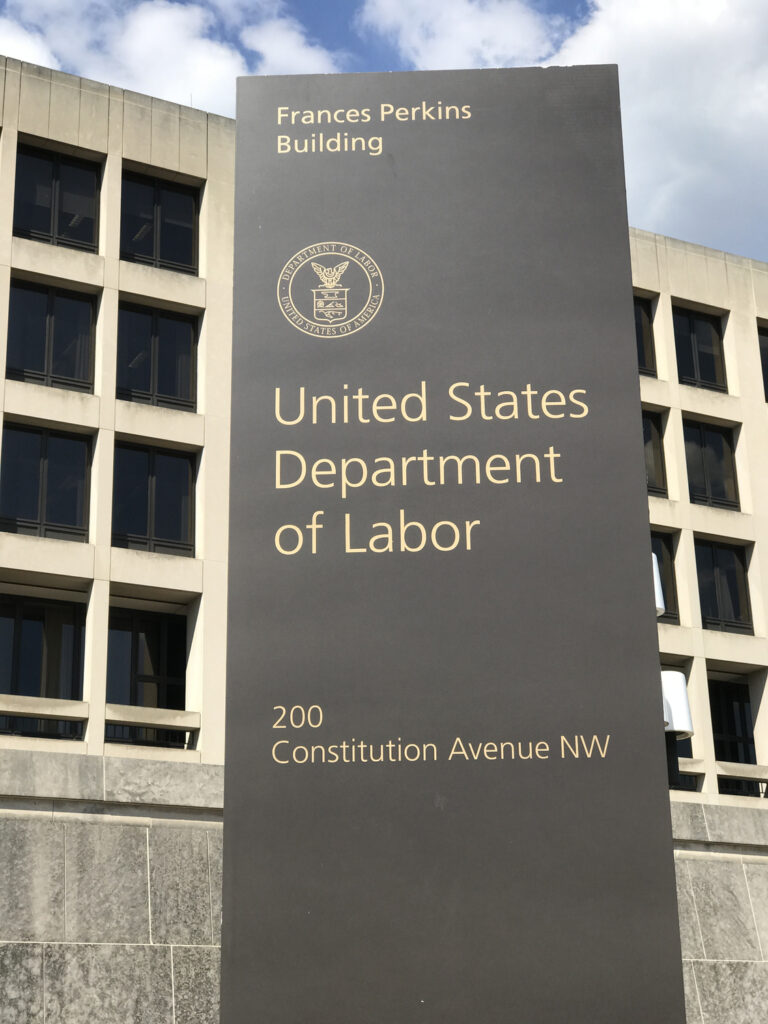Employment Law Report
Department of Labor’s New Guidance on FLSA Independent Contractor Rule Echos from First Trump Administration

Written By: Tyson Gorman with the Assistance of Jon Michael Gaudin
The Department of Labor has recently provided new guidance, published as Field Assistance Bulletin No. 2025-1, to staff at the Wage and Hour Division regarding how to analyze a worker’s status as either an independent contractor or an employee. The factors used to determine independent contractor status have been in flux for decades. While the determination of independent contractor status relies on an “economic realities” test, the focuses and factors of that test have undergone subtle shifts that could lead to different results.
The 2021 Rule
In 2021, the first Trump Administration’s Department of Labor issued a rule titled Independent Contractor Status Under the Fair Labor Standards Act (FLSA). This 2021 rule provided five factors, but highlighted two core factors: “(1) The nature and degree of the worker’s control over the work; and (2) the worker’s opportunity for profit or loss.” The other three factors (skill required to do the work, permanence of the working relationship, and if the work is done as part of a production unit), while still important, were not likely to outweigh the two core factors highlighted. The effect of this rule made it easier for workers to be classified as independent contractors. This rule was in effect from January 2021 until January 2024.
The 2024 Rule
In 2024, the Department of Labor under the Biden Administration replaced the 2021 Rule with its own rule, titled Employee or Independent Contractor Classification Under the FLSA. This rule provided six factors for consideration and noted that no single factor was, by itself, stronger than the others. Those factors were:
(1) the degree of the alleged employer’s right to control the manner in which the work is to be performed; (2) the worker’s opportunity for profit or loss depending upon their managerial skill; (3) the worker’s investment in equipment or materials required for their task, or their employment of helpers; (4) whether the service rendered requires a special skill; (5) the degree of permanence of the working relationship; and (6) the extent to which the service rendered is an integral part of the alleged employer’s business.
The 2024 Rule also noted that this was not an extensive list, that more factors might exist, and encouraged adjudicators to examine the totality of the circumstances surrounding the working relationship. In effect, this rule made it more challenging for workers to be classified as independent contractors and had the effect of ensuring employee protections for more workers.
The New FLSA Guidance
Now that the second Trump Administration is in charge of the Department of Labor, the Department of Labor has explicitly stated it would no longer apply the analysis recommended in the Biden Administration’s 2024 Rule. In May 2025, the Department of Labor issued Field Assistance Bulletin No. 2025-1 which gave updated advice on how to assess the question of whether a worker was an employee or an independent contractor. The Wage and Hour Division will, for now, in Opinion Letter FLSA2025-2, revert to the standards set forth in Fact Sheet #13 (July 2008) and Opinion Letter FLSA 2019-6. These revived rules state seven factors to be used in the economic realities test. Those seven factors are:
(1) The extent to which the services rendered are an integral part of the principal business;
(2) The permanency of the relationship;
(3) The amount of the alleged contractor’s investment in facilities and equipment;
(4) The nature and degree of control by the principal;
(5) The alleged contractor’s opportunities for profit and loss;
(6) The amount of initiative, judgment, or foresight in open market competition with others; required for the success of the claimed independent contractor; and
(7) The degree of independent business organization and operation.
The guidance also notes that “the place where the work is performed, the absence of a formal employment agreement, or whether an alleged independent contractor is licensed by State/local government” are unimportant factors for this analysis.
This new guidance is slightly different from both the 2021 and 2024 Rules. The guidance serves as an indication that the Department of Labor will provide additional rulemaking.
The New Guidance Does Not Apply to Private Litigation… For Now
The new guidance will only apply to litigation initiated by the Department of Labor’s Wage and Hour Division and will not apply to litigation initiated by an individual or a group of workers. For now, the 2024 Rule, issued by the Biden Administration, is still in place for any private litigation. In this sense, the scope of the new guidance is limited. Rather, the new guidance shows us that the Department of Labor’s approach to independent contractor classification is evolving.
Which Rule Applies to Me?
It depends. Private and non-private adjudication differ in a few ways. Here is how to tell which rule applies to a given dispute.
The 2024 Rule applies when an individual worker or a group of workers initiates private litigation. The purpose of this litigation is typically to seek and obtain compensation for violations of labor laws. Often, these disputes are filed in court.
The New Guidance, on the other hand, applies when the Department of Labor launches an investigation into a business to enforce federal labor laws.
What Does This Mean for Employers?
As a practical matter, employers should continue to follow the Biden Administration’s 2024 Rule for all private employment matters. For any Wage and Hour Division investigations, however, the new guidance will be followed. The distinction between these two scenarios depends on who initiated the action, the purpose of the action, and the legal process involved.
